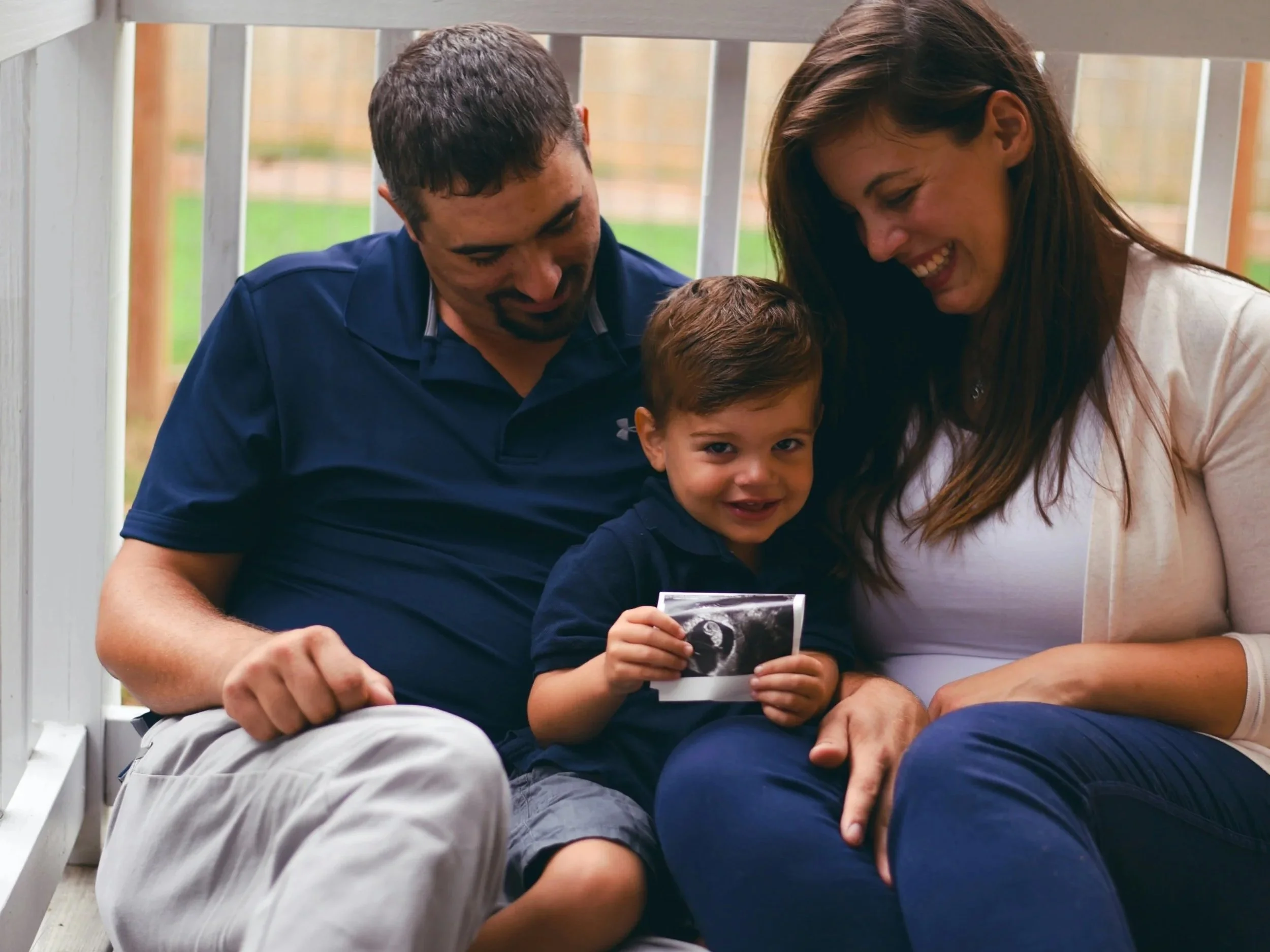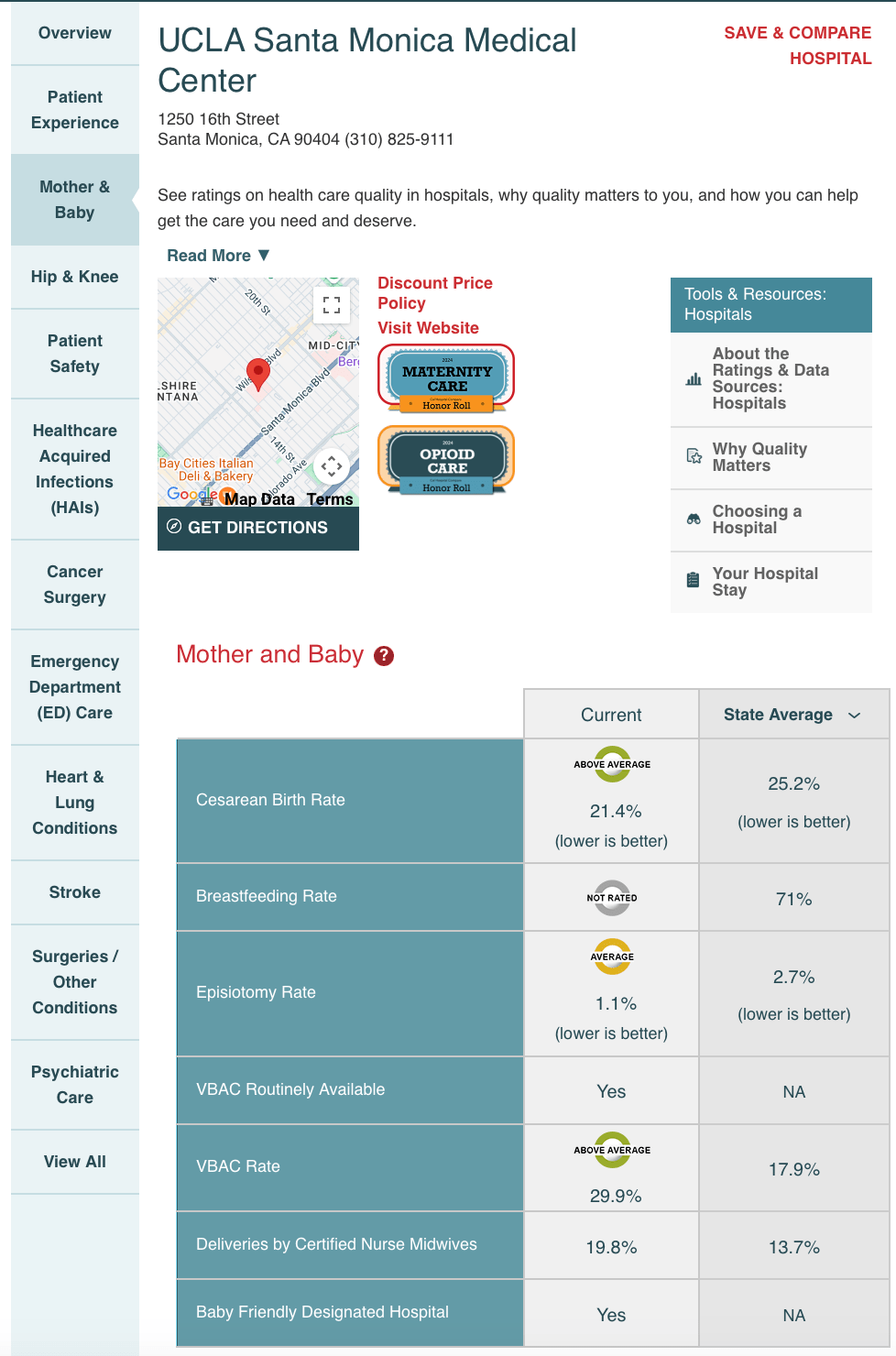VBAC in Los Angeles- Your Guide to a Vaginal Birth After Cesarean
By: REbecca Belenky at Los Angeles birth
Thinking about a VBAC (Vaginal Birth After Cesarean) in Los Angeles? You're not alone—and you have more options than you might realize. This guide breaks down what VBAC is, why it's safe for most people, and how outcomes vary dramatically across LA hospitals like Cedars-Sinai, MLK, UCLA Santa Monica, and Huntington. You'll also learn about VBAC at home and in birth centers, plus how to build the right team for a supported, empowering birth.
Family holding a ultrasound picture of second baby
Are you pregnant again and wondering if a VBAC is possible?
Many parents in Los Angeles are seeking a more holistic, supported, and physiological birth experience after a surgical one. And there is good news: VBAC is not only possible—it is a valid and reasonable option for most pregnant people.
Whether you're dreaming of a home VBAC, a midwife-supported VBAC at a birth center, or a hospital VBAC with an OB or midwife, this guide will help you navigate your options and find your people for pregnancy support.
What Is VBAC?
VBAC stands for Vaginal Birth After Cesarean. It simply means giving birth vaginally after having had a prior cesarean.
Many pursue a vaginal birth after a cesarean because they feel it offers:
Shorter recovery time
Less risk of surgical complications
A greater sense of autonomy
Reduced risk of placenta accreta in future pregnancies
Added benefits to the baby's long-term health
Alignment with your body's innate ability to birth
Is VBAC Safe?
That is a question on the minds of many parents exploring this choice in Los Angeles. The asnwer is YES, it a safe option for many. In fact, the American College of Obstetricians and Gynecologists (ACOG) states that "VBAC is a safe and appropriate option for most people" who have had one prior cesarean with a low-transverse incision. If ACOG themselves are saying this so clearly, why does our culture hold so much fear around VBAC as an option? Why is the belief of "once a cesarean always a cesarean" still deeply alive in our culture when the governing body clearly states its safety?
Additionally, according to Evidence Based Birth:
"60–80% of people who attempt a VBAC will have a successful vaginal birth". The key? "Supportive care providers" and "an environment that trusts birth."
That is a fascinating distinction and makes the provider choice an essential piece of the puzzle. Finding a supportive and trusting care provider can be the most challenging piece of preparing for a vaginal birth after cesarean. In my experience, most OB/GYNs are not going to come out and state they don't "allow" VBAC, or that they believe cesarean is better.
✨A person who wants a good chance of finding a truly supportive provider needs to be a detective and not be afraid to ask lots of questions. If you listen to the way the provider speaks about the risks of VBAC and the pros of a repeat cesarean, you can usually hear where their preference/comfort lies with either mode of birth.
Your VBAC Options in Los Angeles
Here's the magic of LA: you have OPTIONS. Just like "once a cesarean, always a cesarean" is outdated and false, VBACs can happen in many different locations! There are many ways to approach your next birth. From hospital to home, you can find a medical provider that aligns with your values and supports your choices.
Hospital VBAC in Los Angeles
There is a wide array of support within the VBAC community.
✨ Interview OBs early. Not all providers who say they "allow" VBAC actually support it.
The numbers don't lie. Find out your provider and your hospital's Cesarean rate.
The website Cal Hospital Compare is a fantastic resource for learning about the VBAC culture at the hospital and the likelihood of a VBAC there.
How it works— You search your area, choose a hospital, and then select "Mother & Baby" on the left column to see the rates of "VBAC success" and other interesting data. Here is a visual of their opening page-
Hospital listing from Cal Compare Website
I took some screenshots of popular Los Angeles Hospitals. Let’s compare a few. This information is from June 2025.
Let’s start with what is known as the “it” place to birth in LA- Cedars-Sinai.
Cedars Sinai birth statistics
The Cedars Sinai numbers that stick out to me are their Cesarean rate-31.1%, VBAC rate 19.1%, midwife deliveries 1.1%
Let’s look at another hospital that is not as well known but I have had clients have amazing experiences, Martin Luther King Hospital.
MLK hospital birth statistics
The Martin Luther King Hospital numbers are REALLY DIFFERENT!
The MLK rates are:
Cesarean 17.3%,
VBAC rate 40.5%,
Midwife led deliveries 60.4%
That means out of 100 births MLKs ‘mode of birth’ breakdown is 83 vaginal and 17 cesarean vs Cedars 69 vaginal to 31 cesarean.
If 100 people with previous cesarean walk in to MLK to have a baby, 40 of them will have a successful VBAC, while the remaining 60 will have a repeat cesarean.
Compare that to Cedars, if 100 people with a previous cesarean show up to have a baby— only 19 people will have a VBAC and 81 people will have a repeat cesarean.
Just seeing these numbers gets me excited about midwifery care. The parents wanting a VBAC at MLK are twice as likely to be successful. If we look at the numbers from both of these facilities we can learn a lot about the different cultures and ways of supporting VBAC birth.
Let’s take a look at another hospital in Santa Monica, CA. UCLA Medical Center.
UCLA Santa Monica Medical Center Statistics from Calhospitalcompare.org
At UCLA Santa Monica, we have:
Cesarean rate of 21.4%
VBAC rate of 29.9%
Midwife led deliveries 19.8%
Let’s compare that to another busy hospital in Los Angeles- Huntington Hospital in Pasadena, CA
Huntington Hospital birth statistics from Calhospitalcompare.org (2025)
For Huntington Hospital, the birth statistics are:
Cesarean rate 28.6%
VBAC rate 13.8%
Midwife led deliveries 0%
Comparing the hospital statistics side by side is very illuminating. These are all well-respected hospitals in Los Angeles and they have very different rates of cesarean and VBAC. Each hospital has its own birth culture, and these differences highlight how much a birth location can influence a person’s ability to have a vaginal birth after cesarean.
Home VBAC / HBAC (Home Birth After Cesarean)
There is only a small percentage of people who choose home birth in Los Angeles, BUT home birth VBAC is legal in California and supported by many licensed midwives in the LA area. Home birth VBAC (HBAC) is a valid choice for birthing parents who meet medical criteria and want:
Total bodily autonomy
Little pressure to induce or augment
A private, uninterrupted birth space
Physiologic birth as the norm
Look into licensed midwives who specialize in VBAC and HBAC—many are happy to co-manage care and provide honest risk counseling.
VBAC at a Birth Center
While not all birth centers in LA accept VBAC clients, some do under certain conditions. These centers typically offer:
A holistic, low-intervention model
Hydrotherapy, birth tubs, and natural pain relief options
Continuity of care with one-on-one midwifery support
Building Your VBAC Dream Team
If you're planning a VBAC in Los Angeles, your support team matters. Here’s who you may want:
A VBAC-informed doula to help you stay grounded and heard
A provider who views VBAC as *normal*—not risky
A midwife or OB who supports spontaneous labor (rather than scheduled induction)
A prenatal chiropractor or acupuncturist for alignment and nervous system support
A postpartum plan to help you process the birth, regardless of the outcome
Words of Encouragement from a Doula
Choosing a VBAC is not about making up for a past experience—it’s about making informed decisions that pave the way for a different kind of birth.
There is no “right” way to give birth. But if your intuition is calling you toward a different experience than last time, you should listen to it. Having a truly supportive team around you this time will give you the chance to experience your next birth in a new way. You deserve a birth team that sees you, believes in you, and supports the full story of who you are.
✨ Are you in Los Angeles and considering your options? Let's Talk About Your VBAC Goals
As an experienced doula supporting VBAC families, I offer:
Personalized, heart-centered support
Evidence-based resources in pregnancy and labor -check out Evidence Based Birth Research on VBAC to inform your intuition.
Provider referrals tailored to your values
Informed advocacy through every stage of your journey - check out the VBAC Facts Website
Explore my VBAC doula services
Rebecca Belenky is a Los Angeles–based doula, childbirth educator, and lactation educator who has been supporting families since 2014. Through her practice, Los Angeles Birth, she offers compassionate, trauma-informed care that helps parents feel informed, grounded, and confident through pregnancy, birth, and postpartum.






